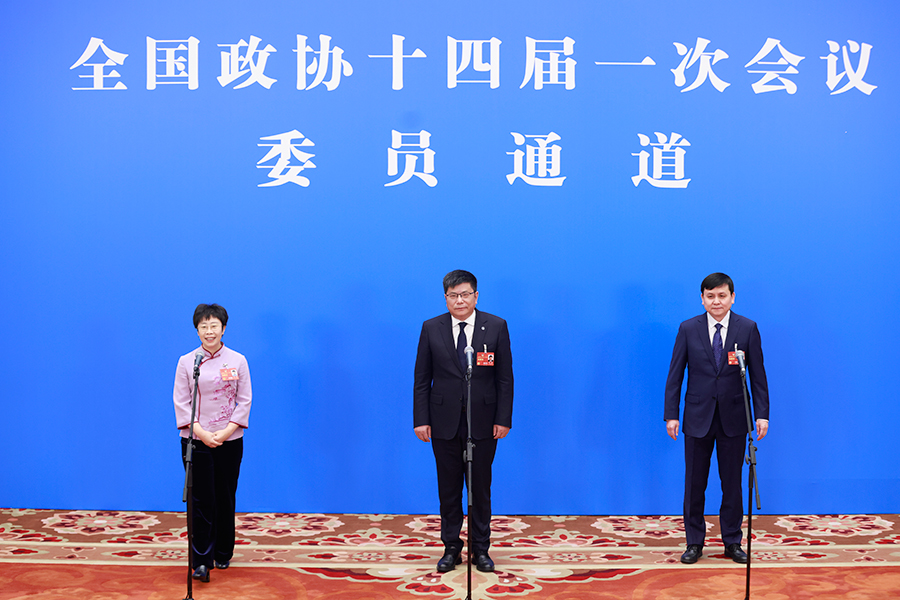Expert: Boost grassroots healthcare

A group interview takes place ahead of the opening of the first session of the 14th National Committee of the Chinese People's Political Consultative Conference at the Great Hall of the People in Beijing on Saturday. (From left) Meng Man, Dai Bin and Zhang Wenhong, members of the 14th National Committee of the CPPCC, are interviewed by the media. [PHOTO by JIANG QIMING/CHINA NEWS SERVICE]
Prompt adjustments to COVID-19 management strategies and the effective response of grassroots medical workers were some of the key factors in China's victory over the virus, a member of the Chinese People's Political Consultative Conference (CPPCC) National Committee said on Saturday.
Zhang Wenhong, head of the Center for Infectious Diseases with the Shanghai-based Huashan Hospital of Fudan University and a member of the 14th CPPCC National Committee, called for boosting grassroots health facilities and improving triaged medical procedures.
"The central leadership of the Communist Party of China has upgraded virus control policies based on the latest epidemic situation, which enabled us to avoid several infection peaks driven by deadly strains," he said. "This is the key reason for us to exit the epidemic."
Zhang made the remarks on the sidelines of this year's two sessions during the first face-to-face interview with reporters since the virus first emerged in late 2019. Due to COVID-19 restrictions, these interviews were conducted via video link for three consecutive years.
As the less pathogenic but highly transmissible Omicron strain became dominant, China began gradually easing COVID-19 curbs in November and experienced an infection peak around late December.
Zhang said the month before this year's Spring Festival holiday, from Jan 21 to 27, was a particularly tough period for healthcare workers.
"Many experts in Shanghai, including myself and my teams, visited the 247 community health centers across the city," he said."During these visits, I found that grassroots medical workers had actually shouldered a ton of antivirus work and they constituted the key force to exit the epidemic."
Zhang recalled that during a visit to the city's Zhujiajiao township, a 68-year-old COVID-19 patient was able to receive consultation from high-level experts, thanks to a remote diagnosis platform and help from local doctors.
"This story has reaffirmed my determination to beef up community healthcare systems," he said. "If we can effectively mobilize healthcare resources in neighborhoods, more critical patients can access better treatment earlier."
As the domestic epidemic has subsided, he said it is time to strengthen grassroots healthcare systems and improve the agility of triaged procedures in order to increase the resilience of China's medical system.
China downgraded the management of the disease from Class A to B on Jan 8. On Feb 16, the central leadership declared "a decisive victory" over COVID-19.
CPPCC members said the booming tourism during the Spring Festival holiday was a reflection of the return to normal life.
Dai Bin, president of China Tourism Academy and a CPPCC member, said on Saturday that the holiday saw 308 million domestic trips being made, which created revenue of 375.8 billion yuan ($54.4 billion).
Starting on Feb 6, China also resumed outbound group tours to 20 countries and regions, including Thailand and Singapore.
Dai said that China's tourism consumption has been increasing consistently since 1999 and experienced a boom in the past decade.
"With the implementation of the 14th Five-Year Plan (2021-25) and the optimization of virus control measures, we are bound to see the vitalization of the country's tourism industry in the future," he said.
Copyright © The National Committee of the Chinese People's Political Consultative Conference.
All rights reserved. Presented by China Daily.
京ICP备08100501号-1

